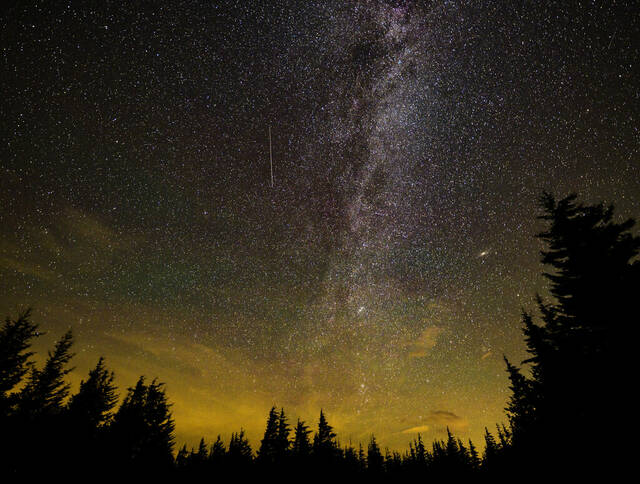Fireballs expected to blaze across the sky
The Geminid meteor shower — always a highlight of the meteor year — is expected to peak Monday night into Tuesday morning, with prime viewing opportunities arriving from 3 a.m. to dawn.
“The Geminids are a reliable shower for those who watch around 2 a.m. local time from a dark-sky location. We also often hear from those who see Geminid meteors in the late evening hours,” according to EarthSky.
“But this year, a waxing gibbous moon will be above the horizon during peak time for viewing. And it’ll set shortly afterwards, leaving the sky dark for watching meteors. Thus, the best time to watch for Geminid meteors in 2021 is likely before dawn — say, from around 3 a.m. to dawn — on Tuesday morning (or Wednesday morning, if you must).
“If you miss the Monday night and Tuesday morning, you could also try Wednesday morning, shortly before dawn breaks.”
Skywatchers can delight at the streaks of light that race across the sky.
But one matter complicating the Geminid meteor shower's visibility this year is a moon that is 78% full. https://t.co/jLgpCvcmDP pic.twitter.com/4543uebhMN
— USA TODAY (@USATODAY) December 13, 2021
About 50 meteors per hour is a good show for the Geminids, but on a particularly dark night that can climb as high as 150 per hour.
The shower could produce some meteors known as earthgrazers. Those are slow-moving, long-lasting meteors that appear the cross the night sky from horizon to horizon.
The Geminid meteors appear to radiate from within the constellation Gemini in the southwestern sky, but the optimum viewing position is reclined and looking straight up to view as much of the nightsky as possible.
The meteors in the upcoming shower are debris left behind by near-Earth object 3200 Phaethon, an asteroid that long ago may have collided with some similar object. Phaethon continues to circle the Sun in a 1.4-year orbit.
The pre-dawn hours of Dec. 14 are the best time to see the annual #Geminid #MeteorShower!
☄️ Tips for watching: https://t.co/ytJVQLr0ty
☄️ Live stream, weather permitting: https://t.co/uqdcCfOhls
☄️ Did you know meteors leave smoke in the atmosphere? https://t.co/Dj0HuaT6QB pic.twitter.com/9fjrZppu4L
— NASA Solar System (@NASASolarSystem) December 13, 2021
The Geminid meteor shower was first recorded in 1833 by observers on a Mississippi riverboat.
It’s growing steadily stronger as Jupiter’s gravity pulls the stream of debris closer to Earth, according to NASA.
Remove the ads from your TribLIVE reading experience but still support the journalists who create the content with TribLIVE Ad-Free.

